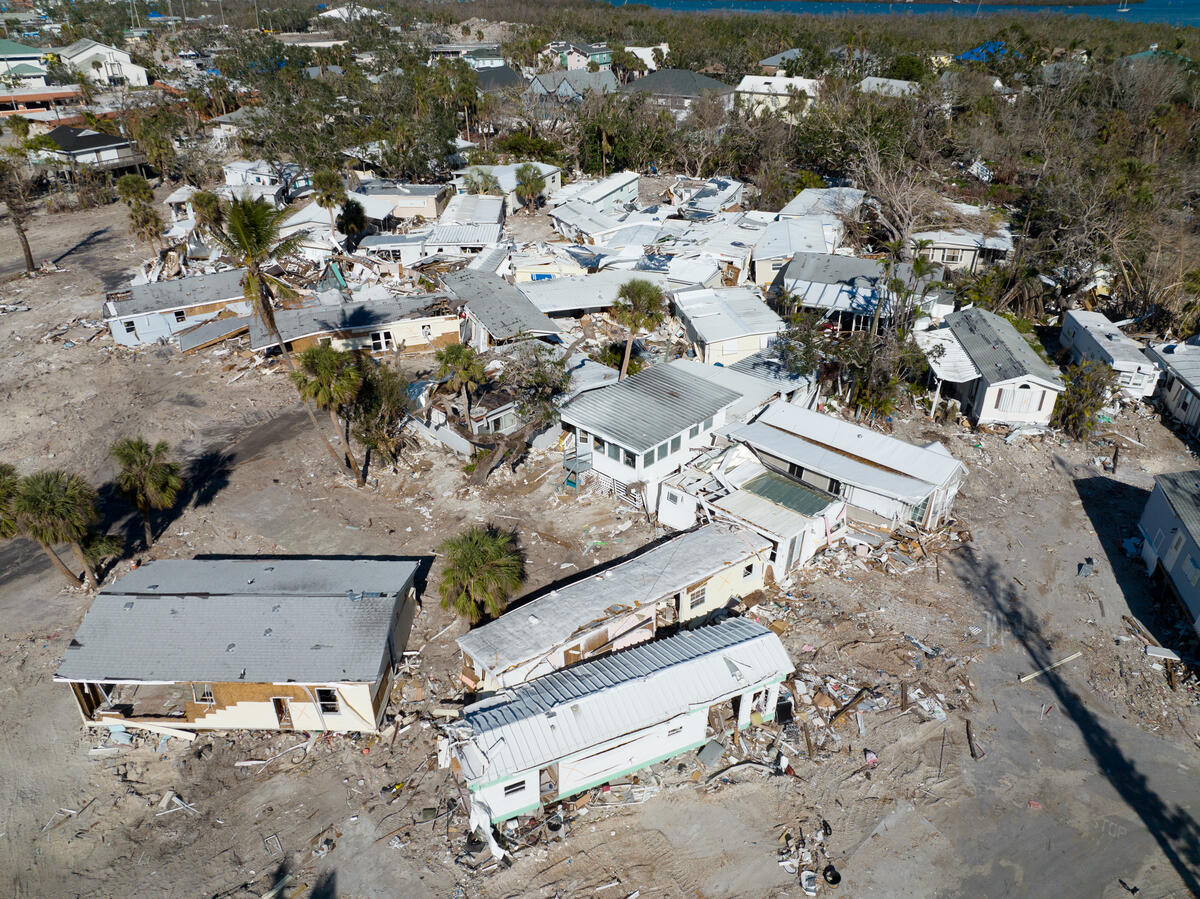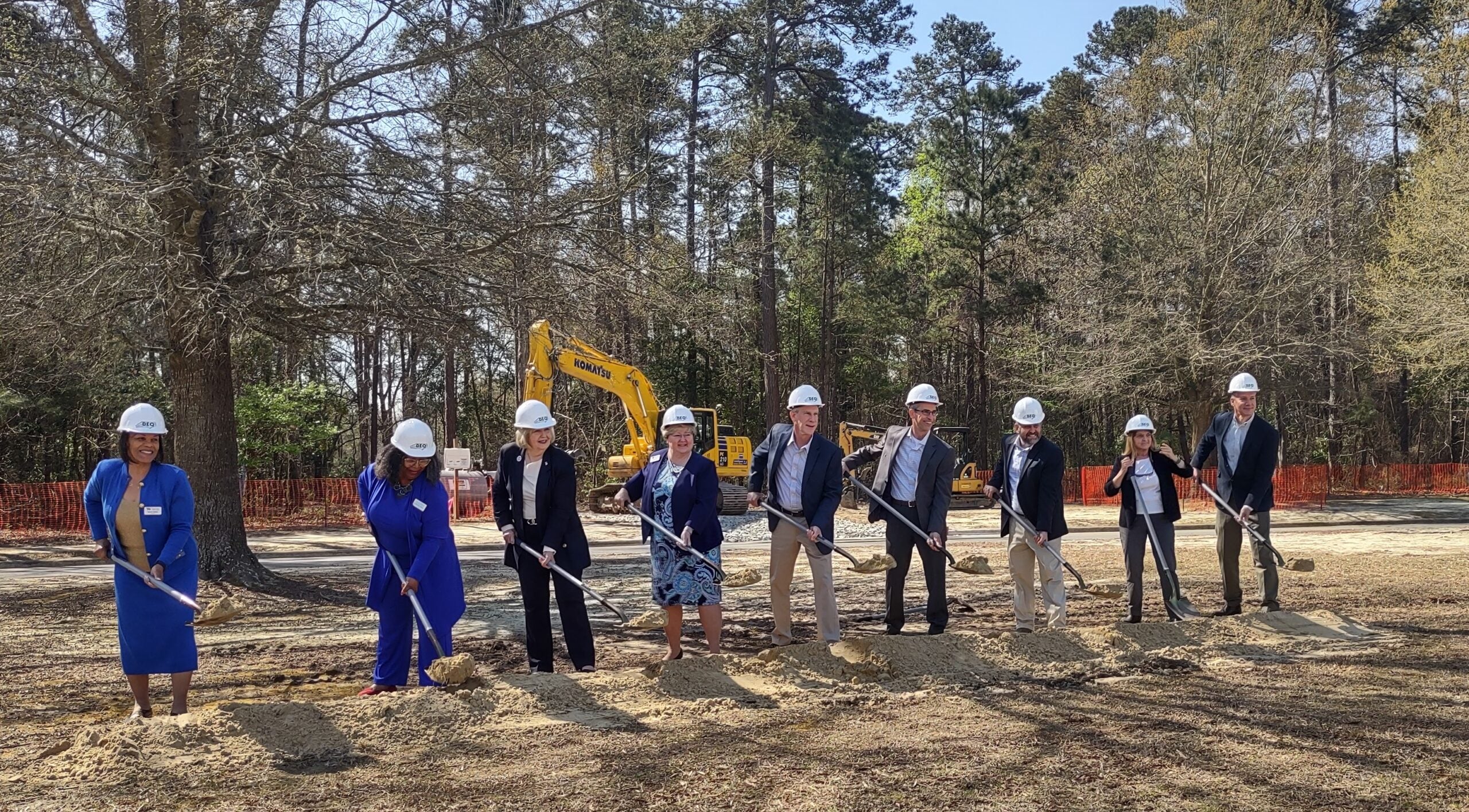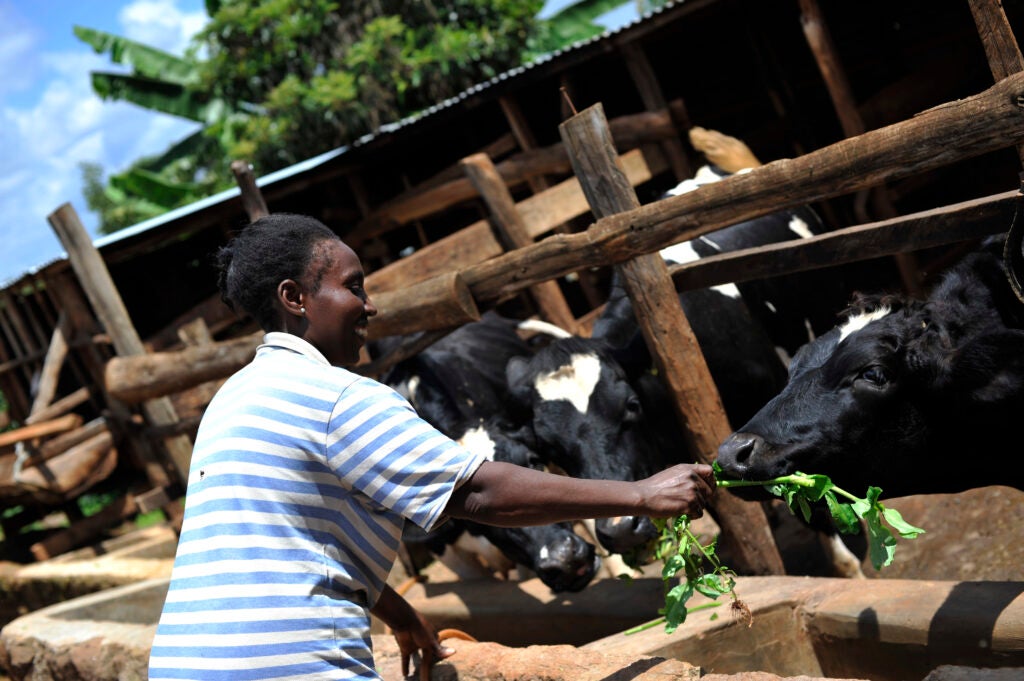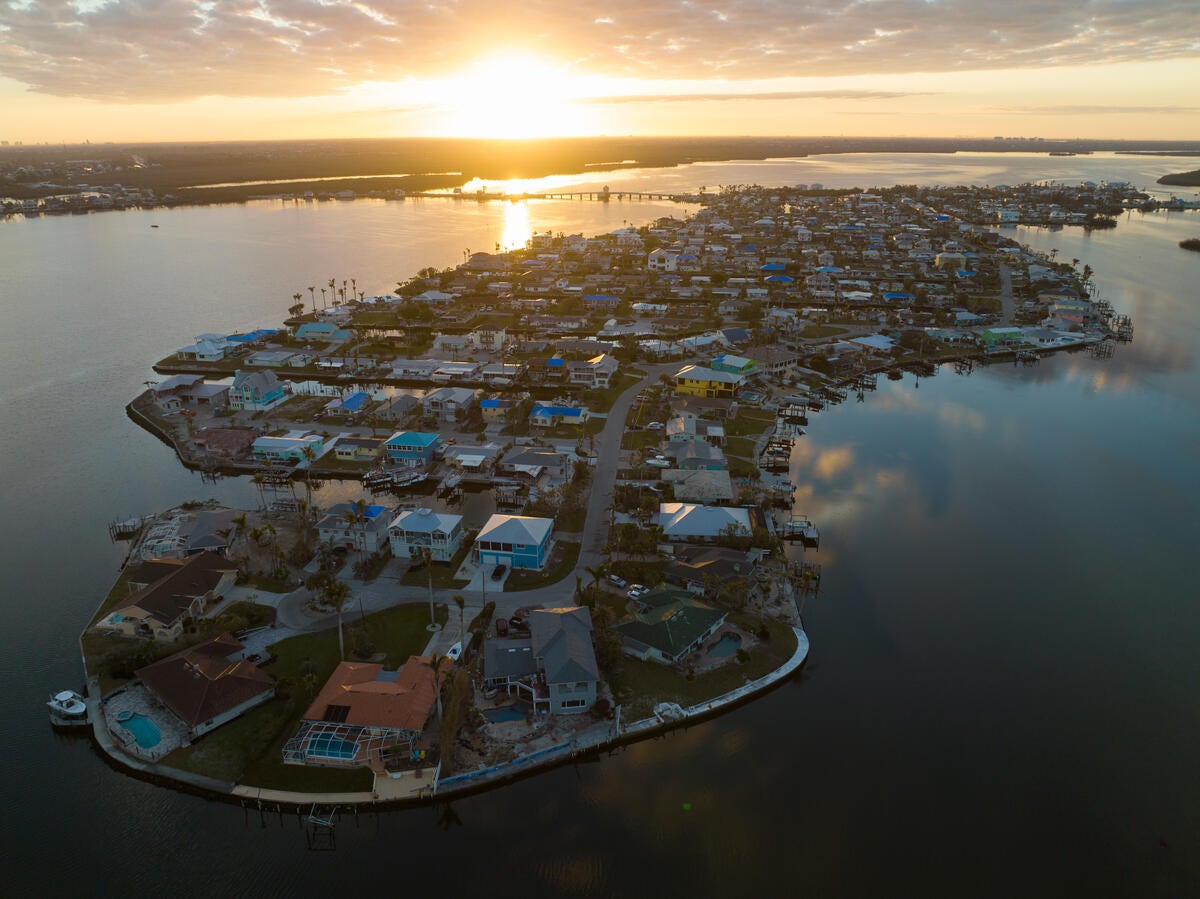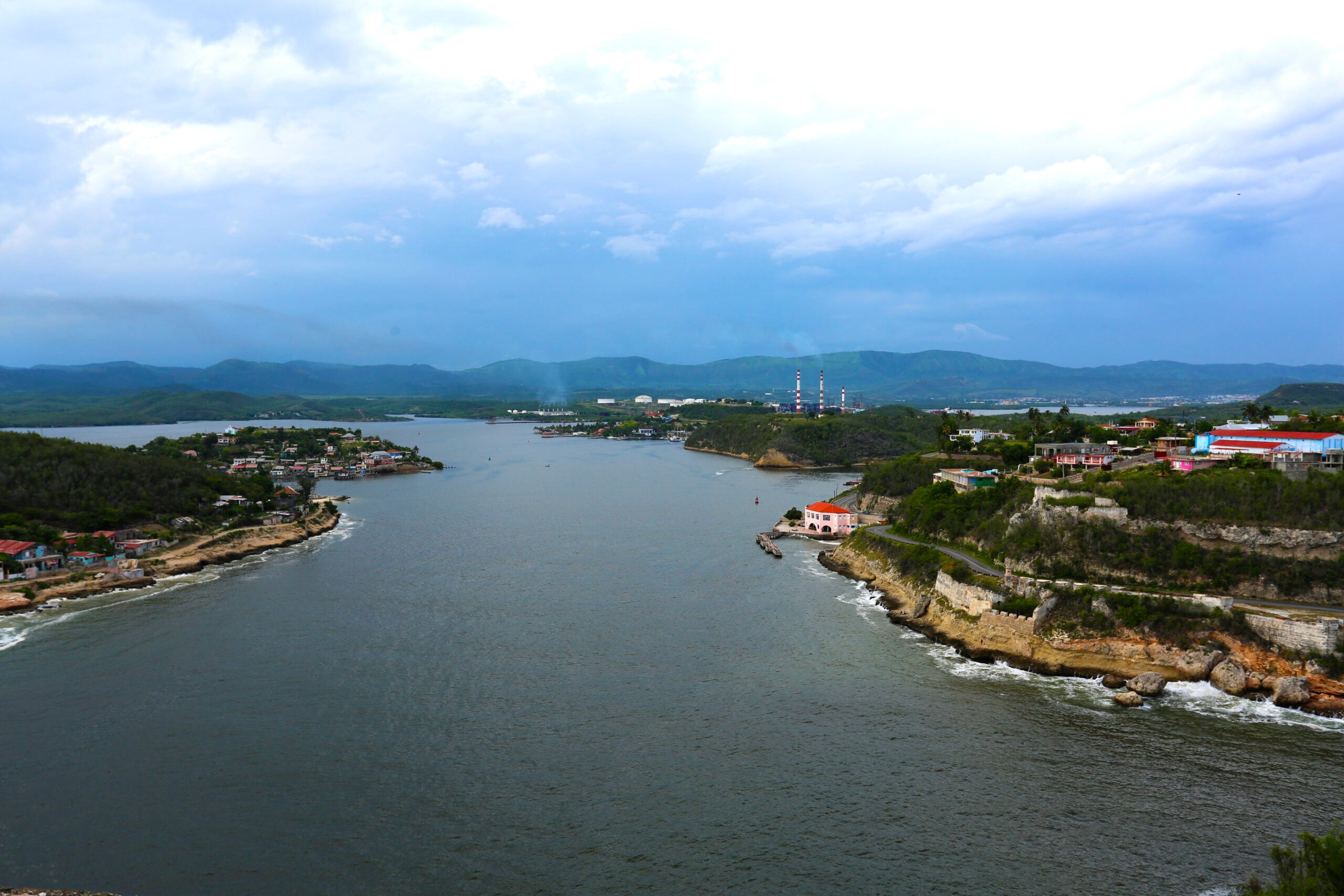On April 4, the Federal Emergency Management Agency (FEMA) was directed under the Trump administration to eliminate one of the largest disaster preparedness programs in the country. By defunding the Building Resilient Infrastructure and Communities (BRIC) program, the administration will be canceling more than $882 million in funding aimed at helping communities reduce their risks and minimize costs ahead of natural disasters. These programs help keep people safe and save taxpayer dollars when future storms hit. As we enter this year’s hurricane season, BRIC funding cuts, along with other actions targeted at dismantling disaster safety nets, leave vulnerable states and communities less prepared than ever.
Growing Returns
Selected tag(s): resilience
Major federal funding cuts leave communities less prepared for hurricane seasons
Celebrating the groundbreaking of a natural infrastructure project to combat flooding in North Carolina
Environmental Defense Fund (EDF) joined North Carolina’s Department of Environmental Quality (DEQ) at a groundbreaking event today to celebrate the progress of a new and significant natural infrastructure pilot project.
The Stoney Creek pilot project is an innovative approach to utilizing natural infrastructure and nature’s processes to address flood risk in the City of Goldsboro and in the greater area of Wayne County, North Carolina. Moreover, it is a major step forward in advancing community flood resilience across the entire state.
Animal health is key to healthy people and planet
Maintaining animal health isn’t only an essential practice for livestock farming, though any farmer or rancher will agree that’s true. It’s also a way to lower the methane intensity of the meat and dairy produced by livestock and improve health and livelihoods for people, which is particularly important for smallholder farmers in low-income countries.
Livestock farming contributes more than one-third of human-caused methane emissions, a powerful super-pollutant responsible for much of the additional warming and extreme weather the world is facing. At the same time, animal agriculture both provides critical nutrition and supports the livelihoods of millions of families, benefits that are now at risk due to heatwaves, droughts and other climate impacts.
New Report: How high-quality carbon offsets can lower livestock methane emissions
Authors: Erin Leonard and Maggie Monast
With more than 80 times the warming power of carbon dioxide over the first 20 years after its release, methane is one of the most potent greenhouse gasses. One major contributor to global methane is livestock operations — 32% of methane emissions from human activity come from livestock and animal agriculture.
The good news is that methane’s massive warming potential also creates an opportunity for a big and rapid impact if we can mitigate those emissions. To avoid the worst effects of climate change, we need to rapidly lower livestock methane emissions, a process that requires support and incentives to help farmers and ranchers adopt changes in their businesses.
Developing effective ways to measure a community’s climate resilience
Co-authored by: Anushi Garg and Ravena Pernanand
Anushi is the senior analyst for Environmental Defense Fund’s Climate Resilient Coasts & Watersheds program in New York-New Jersey. Ravena is a research analyst at Regional Plan Association.
Across the globe, we are experiencing detrimental impacts from climate change, with low-wealth communities and communities of color hit the hardest. And while there are several ways we can measure climate impacts — such as determining sea level rise or increasing temperatures — we still lack ways to easily answer the question “how resilient are we?” Or “how does one community’s resilience compare to another?” The right tools are needed to understand how well our communities, ecosystems and infrastructure bounce back from or avoid climate impacts in order for government officials, advocates and community members to effectively assess, track and implement future solutions.
To address this gap, Environmental Defense Fund (EDF) and Regional Plan Association (RPA) collaborated on a pilot project alongside partners and stakeholders in New York City. We characterized stakeholders’ resilience priorities, such as having access to affordable and climate-safe shelter, and identified indicators that could measure the progress of these priorities. Read More
Five reasons why mandatory flood disclosure in Florida would be a big win for realtors
By: Rachel Rhode, Manager, Climate Resilient Coasts and Watersheds and Eve Cooke, Fellow, Climate Resilient Coasts and Watersheds
Buying a home is often one of the biggest financial decisions individuals and families will ever make. More than one-third of Florida properties are at risk of severe flooding in the next 30 years, and despite these risks, Florida does not require flood-related disclosures to prospective homebuyers. Across the U.S., 32 states have enacted flood disclosure laws, requiring a seller to share a property’s flood risks or past flood damages during real estate transactions. Florida residents deserve transparency through flood disclosure, and realtors would benefit by keeping up with this growing industry standard.
Knowing one’s risk is essential in ensuring effective preparedness and response. The Federal Emergency Management Agency estimates just one inch of flooding in a typical 2,500 sq. ft., one-story home can cause more than $25,000 in damages. It is widely misunderstood by more than one-third of homeowners that flood damage is typically not included in standard homeowners or rental insurance policies.
Legislators and realtors are stepping up to address this gap in Florida’s flood policies. In the 2024 Florida Legislative Session, there has been bipartisan support for a new policy on flood disclosure. The Florida Realtor Association is amongst the stakeholders supporting this initiative.
Knowledge is power. Below are the top five reasons why mandatory flood disclosures are a win for realtors and residents.
Sharing innovative solutions to build climate resilience in Cuban coastal communities
The sun beats hot past colonial facades and newly minted hotels in Old Havana, onto the children playing soccer across Paseo del Prado. High tides splash over the tidal wall and the taxi driver notes, over the noise of the street, that dark storm clouds line the horizon and are threatening heavy rains. Like other coastal and island regions, communities in Cuba are experiencing the disproportionate effects of climate change.
Since 2016, Environmental Defense Fund, the Antonio Núñez Jiménez Foundation for Nature and Humankind and the Caribbean Agroecology Institute have partnered with local communities and organizations from Cuba as a part of the Research Initiative for the Sustainable Development of Cuba (RISDoC). RISDoC is a coalition of academics, civil society associations and representatives from international agencies who have come together to exchange innovative strategies and share lessons learned to prepare for climate impacts and spur sustainable economic growth. In addition to bringing together a range of Cuban community members, government officials and researchers, RISDoC connects experts from other regions with Cuba. This includes partners in Puerto Rico and Louisiana, regions that are experiencing more frequent and severe storms due to climate change and are working to build resilience.
Thanks to this important initiative, RISDoC participants are building a more resilient future in Cuba. Check out a few of their key priorities:
Climate-driven floods could displace millions of Americans. Local buyout programs could help them relocate.
By Kelly Varian, Master of Public Affairs Student at UC Berkeley
Flooding is the most frequent and costly natural disaster in the United States, causing over $30 billion in damage annually, with disproportionate effects on low-income communities. With climate change exacerbating flood risk and population growth continuing in high-risk areas, over 40 million Americans living along rivers and inland floodplains, along with 13 million more on the coasts, could see their homes inundated with water by the end of the century.
New report: Investing in Arizona’s water future
This blog is co-authored by Rachel O’Connor, Manager, Climate Resilient Water Systems.
As Arizona’s water crisis worsens due to extreme drought and overuse, more attention than ever is being directed toward addressing this critical issue. At the federal level, an influx of funding has become available through the Bipartisan Infrastructure Law and Inflation Reduction Act. And at the state level, the Water Infrastructure Finance Authority (WIFA) has just begun accepting proposals for its first allocation of $200M for water conservation projects.
Prioritizing communities and nature in the nation’s largest Army Corps project in New York-New Jersey Harbor
A plan for the largest transformation of New York City’s and northern New Jersey’s waterfront since the Robert Moses era has been proposed by the U.S. Army Corps of Engineers (USACE). It’s called the New York-New Jersey Harbor and Tributaries Study and it was introduced to the public to address flooding and storms like Hurricane Sandy. At stake is the future of more than 84 miles of waterfront and waterways in the metropolitan region and an area that supports 16 million people.

New York and New Jersey residents must determine if this $52 billion dollar plan aligns with the future they want. Addressing flood risks is a step in the right direction, but as it stands today, the current proposal does not reflect the priorities of many communities and environmental organizations. With the impacts of climate change already in motion, we simply cannot afford to get this wrong. Read More










